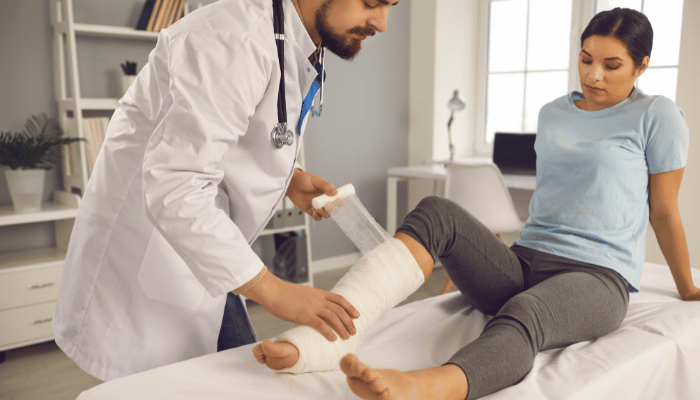Accidents can have a profound impact on our lives, often resulting in bone injuries that require immediate attention and careful management. Whether it’s a fracture, a dislocation, or a sprain, proper care and treatment are essential for a full recovery. It is important to explore various bone injuries that can occur after an accident and discuss the steps to effectively manage them.
Types of Bone Injuries
Understanding the Basics
Before delving into the management of bone injuries, it’s important to familiarize yourself with the various types of injuries that can affect bones. The most common bone injuries include:
Fractures
A fracture refers to a broken bone. Fractures can be classified as open (where the bone punctures the skin) or closed (where the skin remains intact). Common types of fractures include:
- Hairline fractures: Tiny cracks in the bone’s surface.
- Greenstick fractures: Common in children, where the bone bends but doesn’t completely break.
- Compound fractures: Severe fractures where the bone breaks through the skin.
Dislocations
Dislocations occur when the ends of two adjoining bones are forced out of their normal positions. This can affect joints like the shoulder or knee and result in intense pain and loss of mobility.
Sprains and Strains
While not bone injuries per se, sprains and strains can be associated with bone injuries. A sprain affects ligaments, while a strain involves muscles or tendons. These soft tissue injuries often accompany bone injuries.
Stress Fractures
Stress fractures are tiny cracks in the bone caused by repetitive force or overuse. Athletes and active individuals are usually at higher risk for these injuries.
Immediate First Aid
Taking Care of the Injured
In the immediate aftermath of an accident, prioritize safety. Ensure that the scene is secure and that no further harm can occur. If you or someone else has suffered a bone injury, here’s what you can do:
Immobilization
For fractures, try to immobilize the affected area gently. This can be done using splints, slings, or even rolled-up newspapers or magazines. The idea is to minimize movement and prevent further damage.
Elevation
If possible, raise the injured area above heart level. This helps reduce swelling and alleviate pain.
Ice Packs
Apply ice packs wrapped in a cloth to the injured area. This can help reduce swelling and provide some pain relief. Remember to avoid direct contact between ice and skin.
Pain Management
Over-the-counter pain relievers can help manage pain. However, always follow recommended dosage instructions and consult a healthcare provider for severe pain.
Seeking Professional Help
Diagnosis and Treatment
After providing immediate first aid, the next step is to seek professional medical attention. Healthcare providers will perform diagnostic tests such as X-rays, CT scans, or MRIs to assess the extent of the injury. Treatment options may include:
Casting or Splinting
For fractures, dislocations, and some sprains, casting or splinting may be necessary to keep the bone or joint in the correct position for healing.
Surgery
In more severe cases, surgery may be required to reset bones, repair ligaments or tendons, or stabilize fractures using pins, screws, or plates.
Physical Therapy
Rehabilitation is a vital component of bone injury recovery. Physical therapy helps regain strength, mobility, and flexibility in the affected area.
Long-Term Management and Recovery
Recovery Phases
Bone injuries require a phased approach to healing and rehabilitation. Each phase plays a crucial role in achieving a full recovery:
Immobilization Phase
During this phase, the focus is on stabilizing the injury to allow the bones or tissues to heal. This often involves casting, bracing, or splinting.
Mobilization Phase
As the bone or injury begins to heal, controlled movement is introduced. Physical therapy helps restore mobility and prevent muscle atrophy.
Strengthening Phase
In this phase, the goal is to regain strength and improve range of motion in the injured area. Exercises and activities are tailored to the individual’s specific needs.
Maintenance Phase
After recovery, it’s essential to maintain the gains made during rehabilitation. Staying active and adhering to an exercise program can help prevent reinjury and long-term complications.
Trust the Expert Team at Stridewell with Managing Bone Injuries After an Accident
Managing bone injuries after an accident involves careful attention to the type and severity of the injury, immediate first aid, professional medical care, and a structured rehabilitation process. At Stridewell, we’re dedicated to helping individuals recover from bone injuries and regain their quality of life. If you’ve suffered a bone injury, don’t hesitate to reach out to us for expert guidance and support throughout your recovery journey. Remember, with the right care and commitment to your well-being, a full recovery is often within reach.
read article


